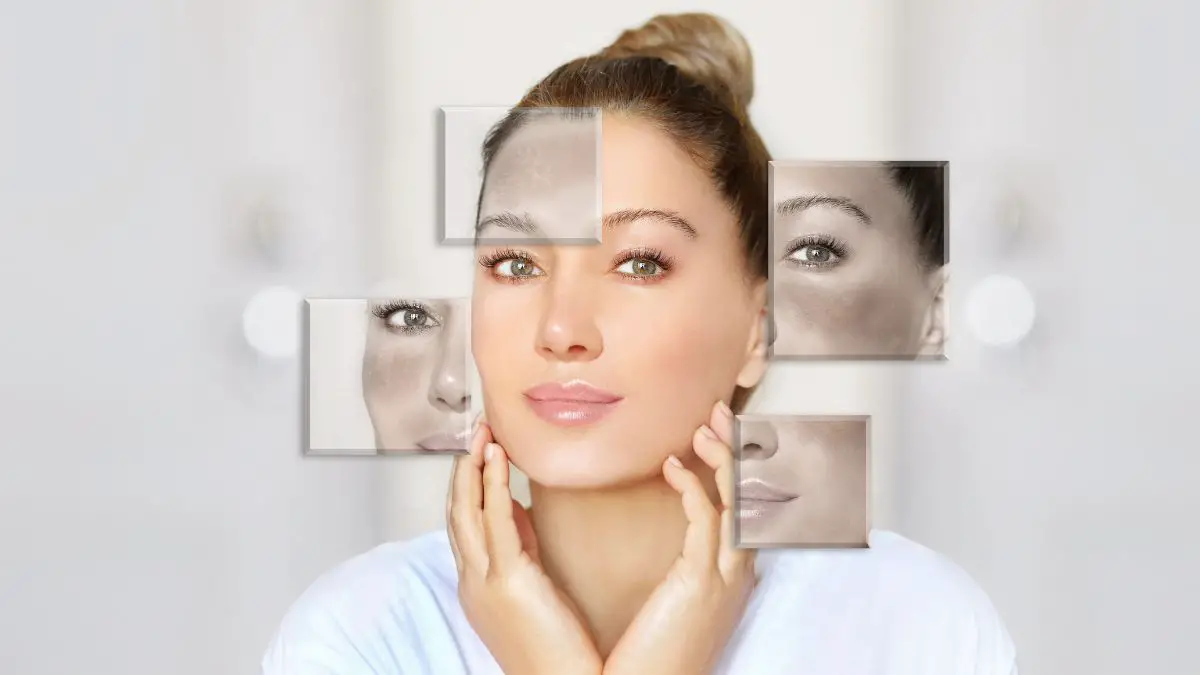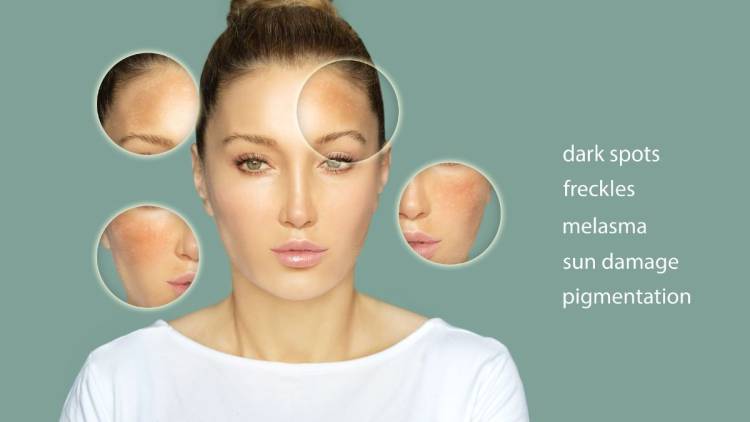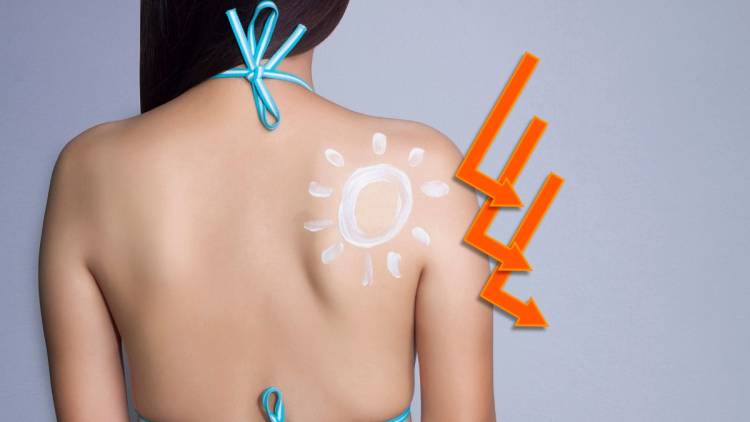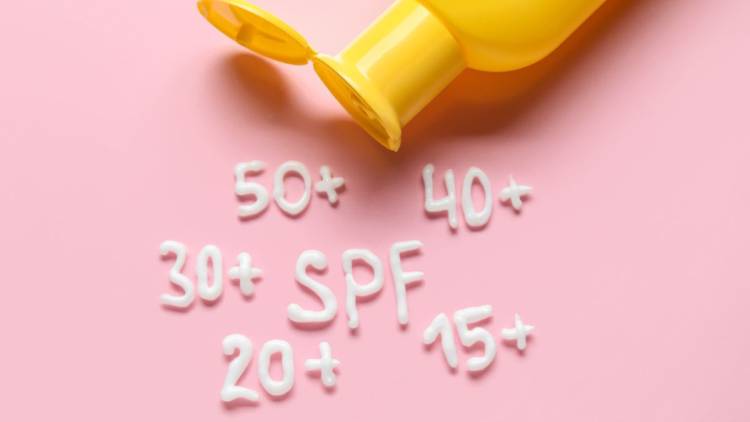It is widely known that sun exposure leads to skin aging. However, new research shows that even light wavelengths that were previously thought to be harmless can cause skin aging. For this reason, it may be time to revise what we know about photoaging and to try our best to protect the skin from harmful sun rays. In addition to this, we should also consider some ways to treat photoaging once it’s already there.
Normal Skin Aging
Aging is a normal process in which the skin loses its thickness and vitality. Grayish skin with wrinkles and a thin-appearing profile is something we’ve learned to associate with aging, but it does not have to be so. There are treatments and ways to protect your skin and keep it looking fresh and vibrant throughout old age.
As we age, the skin loses some of its collagen and elastin, the two substances responsible for that plump, firm look that we can see on young people. Not only does their amount decrease, but the rate at which your body can replenish them decreases as well. In addition to this, the subcutaneous fat gets thinner, leading to thinner skin that is more easily damaged. This thin layer of fat can be found right underneath the skin and is responsible for the full look of your skin and the smooth contours of the face.
What Is Photoaging?
Photoaging is a process in which both visible and invisible light spectrum damages collagen and elastin molecules in your skin. It is most prominent in people of fair complexion with light-colored eyes (the blue eyes) and is especially pronounced in people who spend a lot of time indoors. Generally speaking, photoaging is a global phenomenon.
However, as we get closer to the equator, we can see that people tend to get wrinklier. A part of the reason why is that the closer to the equator you are, the more solar irradiation bathes your skin every time you go out. Alternatively, people who live in mountainous regions also tend to get more wrinkles, especially as a higher altitude also means a lower air column that the light can filter through before it reaches your skin.
Of course, this does not mean that people with darker skin are protected from the harmful sun rays. Although you may have a higher tolerance to sunlight and its harmful effects, it goes without saying that darker skin tones can also receive a lot of damage from exposure to the Sun.
How to Spot Photoaging?
When looking for signs of photoaging, you should bear in mind that sometimes, it looks just like regular aging – albeit a bit premature in nature. Photoaging is characterized by wrinkling and dark spots (sun spots) that can be seen on your skin. Although there are ways to spot photoaging, you should not wait until these signs appear – once they are there, your skin has been damaged by the Sun already.
Besides wrinkles and pigmentation changes, there are other photoaging giveaways:
- Freckles,
- Loss of skin tone,
- Textured skin with bumps and slight indents,
- Redness,
- Irritable skin,
- Loss of skin elasticity, and
- Visible or broken capillaries.
All these changes can be spotted mostly in areas that are most frequently exposed to the Sun. These areas include the face, neck, chest, shoulders, forearms, and the lower two-thirds of the legs. If you want to know what your skin would look like with absolutely no sun damage, just pay attention to body parts that are seldom exposed to the Sun: the inner part of the torso, towards the back, is usually rarely exposed to the Sun.
What Causes Photoaging?
There are several wavelengths that cause photoaging. These include all parts of the light spectrum. While our atmosphere does a fairly good job at preventing harmful UVC and beyond rays from bathing the planet in deadly rays, it is important to also understand the way that other parts of the spectrum can influence the skin and its youthful looks.
IR – Infrared Light
It has only recently been shown that infrared light can damage your skin. Infrared light is in the invisible part of the light spectrum. As such, it is not always easy to spot and protect yourself from, but any light source (including the Sun) that emits heat can emit infrared light as well. You can recognize it by the radiation type of heat that you can feel when you stand in full Sun.
Visible Light
It is still unclear whether visible light can damage the skin or not. Previously thought of as harmless, visible light may cause changes in the chemistry of your skin, causing collagen molecules to break down. This light typically comes from artificial light sources. Recently, it has been shown that even blue light can damage the skin.
HEV – High-Energy Visible Light (the Blue Spectrum)
Blue light or High Energy Visible Light (HEV) can damage the gentle skin on your body. It is not necessary to expose yourself to direct sunlight to receive high amounts of blue light – quite the contrary, blue light can be seen before sunrise and after sunset. Furthermore, any screens which you may be using also emit this type of blue light.
UVA
UVA light is a part of the sunlight spectrum. These rays can penetrate deep into your skin and cause damage there. Besides heating the skin from the inside out, they also damage deeper layers as well. They have the capacity to disrupt collagen molecules and increase photoaging effects.
UVB
UVB lights can only partially pass into the atmosphere. A portion of these rays is held off by the Ozone layer. They can penetrate deep layers of the skin and cause damage to the DNA in every cell of your skin. UVB, therefore, can be considered a skin cancer-causing agent.
UVC
UVC light is the most harmful of all. This type of solar radiation can also penetrate the deep layers of the skin and can cause more harm to the DNA than UVB light. Fortunately, all of it is absorbed by the Ozone layer. However, as the Ozone layer is still not fully formed (as a result of Ozone depleting aerosol use), some areas of the world, especially towards the South Pole, are more prone to UVC passing – this is a reason for concern for the Australian readers.
Who Is in the Risk Group for Photoaging?
Everybody is in the risk group for photoaging. However, there are lifestyle choices that can increase your risk of photoaging. These include outdoor activities, such as sports, hiking, and surfing, as well as professional choices, like construction workers, field workers, farmers, etc. Based on skin tone and eye color, we can differentiate between six types of skin and their (in)tolerance to sunlight damage:
| Skin Type | Complexion | Eye Color | Hair Color | Can Tan? | Risk Level |
|---|---|---|---|---|---|
| Type 1 | Pale | Light (blue or orange) | Blond or Red | Cannot tan | High |
| Type 2 | Fair | Light (blue or orange) | Dark Blond, Brown | May tan, but burns | Medium High |
| Type 3 | Medium light | Brown | Brown or Black | Burns and then tans | Medium to High |
| Type 4 | Light Brown Skin (think Italians) | Brown or Black | Brown or Black | Tans easily, rarely burns | Medium |
| Type 5 | Medium Brown (think Latin Americas) | Brown or Black | Brown or Black | Tans easily, rarely burns | Medium to Low |
| Type 6 | Very Dark | Black | Black | Yes, easily | Low |
How to Treat Photoaging?
The best treatment for photoaging is prevention. However, if you can already see some signs of photoaging on your skin, such as sun spots (liver spots), wrinkles, or thinning skin, it may be time to pay a visit to your dermatologist and find out more on how to treat photoaging signs. Some solutions may include cryotherapy, chemical peels, lasers, and over-the-counter topical agents, such as retinol or tretinoin.
Once the damage is there, your dermatologist can also suggest:
- PRP treatments,
- Hyaluron fillers and injectables,
- Lasers to treat small wrinkles, such as crow’s feet,
- Deep chemical peels, and
- Prescribed topical agents, such as tretinoin.
Additionally, you may also consider a face and neck lift, eye ptosis surgery, earlobe reduction surgery, and lip fillers to revitalize the face and retrieve that youthful look after decades of damage.
How to Prevent Photoaging?
As photoaging is caused by light, the best way to prevent it is to stay away from sunlight for as long as possible. This will give your skin plenty of time to recover and, long-term speaking will cause less overall damage to your skin. Here are some steps that you can take today to significantly slow down the photoaging of your skin:
- Avoid direct sunlight between 10 AM and 2 PM,
- Always use sunscreen with a protection factor of a minimum of 30 for the body and a minimum of 50 for the face,
- Use clothes that cover the majority of your body, including your chest,
- Use hats to avoid damage to the face and scalp skin,
- Avoid sitting next to windows when there is direct sunlight,
- Use curtains and shades to limit how much Sun can enter your home,
- Use creams and lotions to moisturize your skin after sun exposure.
It is important to note how to use SPF (Sun Protection Factor) correctly. Firstly, applying a generous amount is necessary, as not doing so reduces the protection factor by up to ⅔. Secondly, applying sunscreen daily, regardless of the season and whether you will be heading outside, is also a must. Thirdly, choosing high-quality SPF with a mixture of chemical and mineral SPF is the best. Reapply throughout the day, especially after swimming or sweating profusely.
Should You See a Dermatologist?
Photoaging is not a reason per se to visit a dermatologist. We all age, and photoaging is a contributing factor to it. However, what you should be doing is visiting a dermatologist once a year for a skin checkup. This way, your dermatologist will be able to give you their opinion on skin care and skin protection as well as to show any existing signs of photoaging. This way, you will also know how to slow down photoaging and how to address the existing damage.
Premature Skin Aging FAQ
What is Photoaging of the Skin?
Photoaging of the skin is aging that is caused by light. Infrared light, the visible light spectrum, and UV light can all cause damage to your skin. These wavelengths damage the skin by breaking down collagen and elastin molecules into smaller components and by damaging the subcutaneous fat, leaving an impression of an aged, saggy face.
What Causes Photoaging?
Photoaging is caused by the damage that sunlight and other forms of light cause to collagen and elastin molecules found in the skin. As they are exposed to light, they are broken down. When we are young, the skin can naturally replenish these molecules, but as we age, collagen turnover slows down, and the damage accumulates.
How Much Photoaging Can You Get Indoors?
You cannot get much photoaging effect when indoors. However, staying close to the windows, even when not exposed to direct sunlight, can still leave marks on your skin. Remember that photoaging is a result of chronic exposure to sunlight, not a result of 15 minutes spent outside.
How Do You Treat Photoaging?
Photoaging can be treated in many ways. Most dermatologists will recommend starting with facial creams and lotions containing retinol, fruity acids, and hyaluronic. The next levels are lasers and chemical peels that your dermatologist may perform in their office. The last-resort methods after decades of skin damage include PRP injections, filler injections, face, and neck lifts, as well as fat transfer with liposuction.
Final Considerations
Exposure to direct sunlight can cause more harm than good, especially considering that all the damage sunlight causes is cumulative in nature. Over the years, as this damage accumulates, you will be able to notice dark spots, thinning of the skin, skin redness, and broken capillaries. With this in mind, it may be time to visit your dermatologist and learn about the dangers of overt sun exposure.





